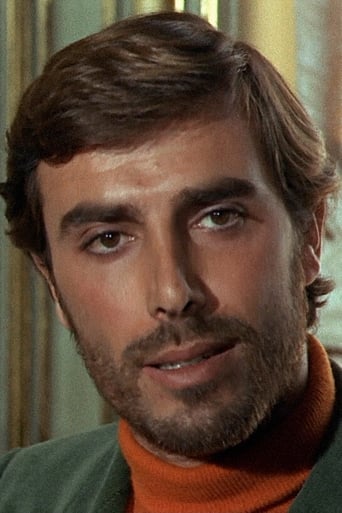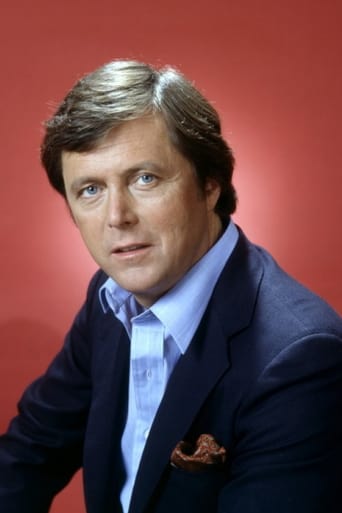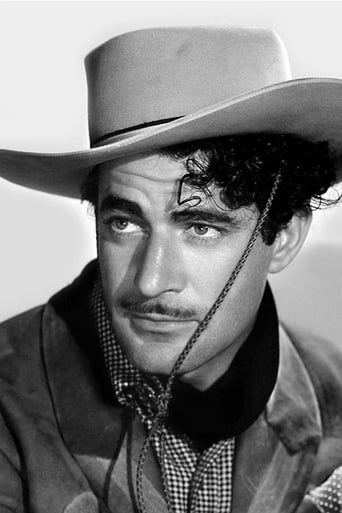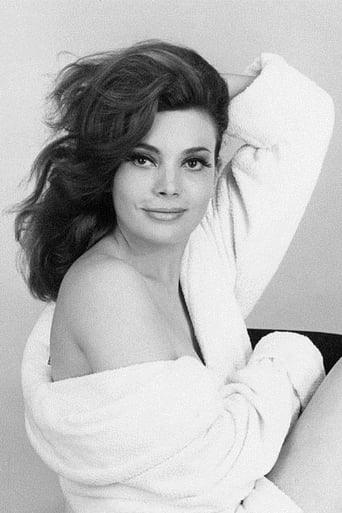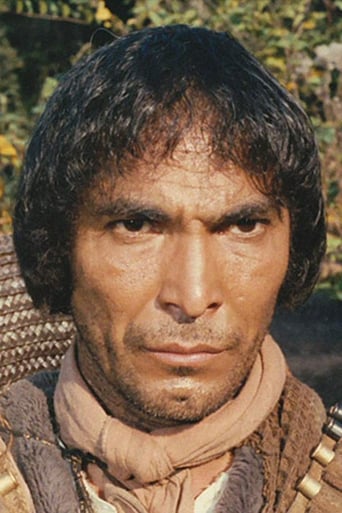Cathardincu
Surprisingly incoherent and boring
SteinMo
What a freaking movie. So many twists and turns. Absolutely intense from start to finish.
Joanna Mccarty
Amazing worth wacthing. So good. Biased but well made with many good points.
Logan Dodd
There is definitely an excellent idea hidden in the background of the film. Unfortunately, it's difficult to find it.
gavin6942
Some thieves rob a train and then hide the gold. However, the man who hid the gold ends up dying -- and everyone is looking for it! At the same time, a bounty hunter slowly tracks one of the men, purposely letting him escape until the bounty rises high enough.This Rome-based film was directed by Enzo G. Castellari. You may know this name because he went on to direct the original "Inglorious Bastards".The Grindhouse Experience box set has some terrible picture quality to it, but this is one exception. Although I am sure they did not get it from a great source, it lacks the grainy, snowy feel of many VHS transfers and is almost what a DVD should be.I presume this film was trying to rip off "The Good, the Bad and the Ugly". The hero has sort of a Clint Eastwood look to him. Of course, you know it's not going to be much more than a disposable spaghetti western, but some people dig that.I actually really enjoyed the story, the directing, the characters... and I am not even really into westerns much. Of course, for westerns I'd recommend you go after the more well-known titles first (Eastwood is hard to beat), but this is a decent lesser-known film and a good way to spend an afternoon when you are snowed in.
Woodyanders
A gang of bandits lead by the shrewd, rugged, ruthless Monetero (a perfectly imposing performance by Gilbert Roland) steals $300,000 worth of gold coins during a daring train robbery. But untrustworthy member Bahunda (an amusing turn by Jose Torres) makes off with the coins and hides them. Unfortunately, Bahunda gets killed before he can tell Monetero where he stashed the booty. So Monetero has to join forces with cunning, cocky, enigmatic bounty hunter the Stranger (smoothly played by the handsome George Hilton) and cagey, corrupt banker Clayton (a delightfully weaselly portrayal by 50's teen idol Eddie "Kookie" Burns) to find the coins. Skillfully directed by Enzo G. Castellari, with a clever, complex and twist-laden script by Castellari, Tito Carpi, and Giovanni Simonelli, a playfully amoral and nihilistic tone (everyone keeps double and triple crossing each other with happily greedy abandon), a twangy, flavorsome, spirited score by Alessandro Alessandroni and Francesco De Masi, plenty of stirring shoot-outs and rousing rough'n'tumble fisticuffs, a wickedly sly sense of self-mocking humor, a steady pace, and a real doozy of a surprise ending, this giddy and often hilarious feature makes for an inspired send-up of Sergio Leone's "The Good, the Bad and the Ugly." Popping up in nifty secondary parts are the luscious Stefanie Careddu as Monetero's fiery gal pal Marisol, Ivano Staccioli as a hard-nosed army captain, and Gerard Herter as flinty lawman Lawrence Blackman. An immensely amusing and enjoyable romp.
em89072002
Lately, I've been watching a lot of westerns from the 1930s to the present. There are some great low budget spaghetti westerns from the late 1960s and early 1970s. This movie had all the elements of a decent western: a good story with talented actors and everything else. Although, it's a spoof of this genre, and for me the way it was done just didn't work and made for a disappointing movie.This movie can easily be divided into two parts.The first part is great; it has a great opening scene and an interesting story develops of a bounty hunter (a.k.a. the stranger) going after a bandit who is going after a large bank shipment guarded, in part, by a banker. Over the course of the movie these three characters form shifting alliances in an attempt to get the money. There are subtle comic nods to the contrivances of earlier films from this genre, but the comedy doesn't disrupt the overall story.The second half of the film is where the comedy goes over-the-top and essentially ruins the movie. The turning point is right at the part where the barmaid causally scolds the dwarf to stop shooting the customers as she goes about waiting on other patrons seemingly oblivious to the four dead bodies laying about the place. From this point onward the movie shifts from a decent spaghetti western with comic undertones to a stupid-silly spoof.There are three horrible fist-fight scenes (one at the river, one in the market and one at the baths) that follow in rapid succession as if one wasn't bad enough. The fighting is so fake it's ridiculous, and since the sound is out-of-sync with the picture it makes it even worse. In the market fight scene the banker bounces about the place on hidden trampolines and twirls around on poles like he is in the circus; it's clownish. Although, the worst part of these fight scenes is the music; it's this light-hearted, sprightly mix more suited for a square dance or a cheesy episode of 'Hee-Haw'. These scenes practically derail the main story.Overall, this movie was disappointing because it had a lot of potential as a decent western, but the comic turns just mucked it up. If you want to see a good western spoof then see 'Blazing Saddles'. If you want to see a good spaghetti western, then avoid this movie.
zardoz-13
This enjoyable Euro-western opens with a scene that predates a similar scene that Sergio Leone wanted to shoot for "Once Upon A Time in the West" but couldn't persuade Clint Eastwood to appear in. Three tough-looking gunfighters ride into a town. One is dressed like the Man with No Name in a poncho. Another is dressed like Colonel Mortimer from "For A Few Dollars More," and the third is garbed like Django, except he rides a horse instead of pulls a coffin behind him with a machine gun in it. Our hero meets them in Main Street behind a wagon loaded with three coffins. "Any Gun Can Play" is a spaghetti western with an in-joke on spaghetti westerns since the hero here wipes out the three killers. Aside from a little too much comedy, especially in the acrobatic fight sequences, this is an above-average oater.The notorious Mexican outlaw Montero (Gilbert Roland of "Barbarosa") and his gang of trigger-happy pistoleros rob an army train transporting $300-thousand dollars in gold coins across the frontier. Director Enzo G. Castellari of "Inglorious Bastards" stages the hold up from a variety of camera angles that thrust you into the forefront of the action. The bandits seize the locomotive along with the coach carrying the gold and separate it from the rest of the train that houses the U.S. Cavalry. While Montero and his gunmen keep the Cavalry pinned down, Pajondo (Pedro Sanchez of "Sabata") commandeers the locomotive, kills the engineer and his crew and trundles it away, leaving the other pistoleros behind to fend for themselves. Essentially, Pajondo double-crosses Montero and steals the gold for himself. Later, Montero catches up with Pajondo at the Rio Grande. Before the bandit can reveal the whereabouts of the loot to Montero, however, a Cavalry sergeant shoots Pajondo dead. Before he dies, Pajondo tells Montero about a medallion that serves as a clue about where he stashed the treasure. The irate Cavalry captain (Ivano Staccioli of "Commandos") imprisons Montero, but he cannot loosen the bandit's tongue even after he uses his whip on him. Infuriated by Montero's reticence, the captain threatens to have the Mexican shot if he doesn't talk. Meanwhile, the jailers let a priest speak to Montero, but he really isn't a priest. The six-gun toting Stranger (George Hilton of "The Ruthless Four") masquerades as a man of the cloth and rescues Montero from a firing squad. Unfortunately, before Montero is rescued, Clayton (Edd Byrnes of TV's "77 Sunset Strip") takes the medallion away from him and keeps it for himself. Clayton is the bank representative that was sent to safeguard the gold. He is horrified that the Captain wants to shoot Montero. Clayton's career at the bank hinges on his ability to recover the gold. The Stranger stages a fire at the fort to distract the firing squad and Montero takes the Captain as hostage and tries to escape, but the Stranger shoots him off the horse. Before the authorities can verify that Montero is dead, the Stranger claims the body for the handsome reward he will receive and he rides out with the Captain's gracious thanks. No sooner have they left the fort than Montero's men show up to rescue him from the Stranger. From this point on, the Stranger, Montero, and Clayton forge short-lived alliances among each other as they search for the gold. Castellari and scenarist Tito Carpi, who has penned a number of spaghetti westerns such as "A Few Dollars For Django" and another Castellari oater "Seven Winchesters for a Massacre," rely on clever humor and surprise reversals to keep the action fresh and fast-paced. One cool scene has Clayton seated at a table about to eat his meal when he hears some suspicious sounds from behind him. Clayton pours his drink on the table and sees the gunmen behind him with holstered six-guns."Any Gun Can Play" lives up to its title. In fact, many guns do play, and at least twenty or more corpses pile up before fade-out. This western isn't so much a parody as it is a knock-off of Sergio Leone's "The Good, the Bad, and the Ugly." Mind you, bad guys and good guys fall as frequently as ten-pins in a bowling alley, but their deaths aren't depicted in the brutal fashion of a Leone western. "Any Gun Can Play" doesn't take itself as seriously as the aforementioned Leone masterpiece. The three leads jockey back and forth for supremacy. Each has a piece of the puzzle that will lead them to the treasure, but they refuse to share their information until the shoot'em up finale. Lenser Giovanni Bergamini's colorful widescreen photography is spectacular, especially the opening shots of the train chuffing along railway tracks with distant mountain peaks rearing up dramatically in the background. Another great shot occurs when Montero tests the Stranger's imperturbable calm. This scene happens after the Stranger has rescued Montero and the Mexican's minions arrive to save their chieftain's bacon. Confiscating the Stranger's six-gun, Montero takes aim at the poncho-clad tough guy and empties the revolver, placing his well-aimed bullets harmlessly in and around the unflinching gunslinger. Bergamini, who photographed Castellari's World War II thriller "Inglorious Bastards," frames the scene with the Stranger in the background and his pistol in Montero's hand in the foreground for a pleasing, three-dimensional style shot. Meanwhile, Francesco De Masi's lively orchestral soundtrack is as memorable for its own idiosyncratic melodies as Ennio Morricone's soundtracks were for the Leone westerns. The opening song is reminiscent of a 1950's Hollywood western with its catchy lyrics and guitar riffs. Although it isn't a major spaghetti western, "Any Gun Can Play" is always entertaining nonsense with interesting plot twists and good performances, especially the indefatigable Gilbert Roland who was 62 years old at the time!

